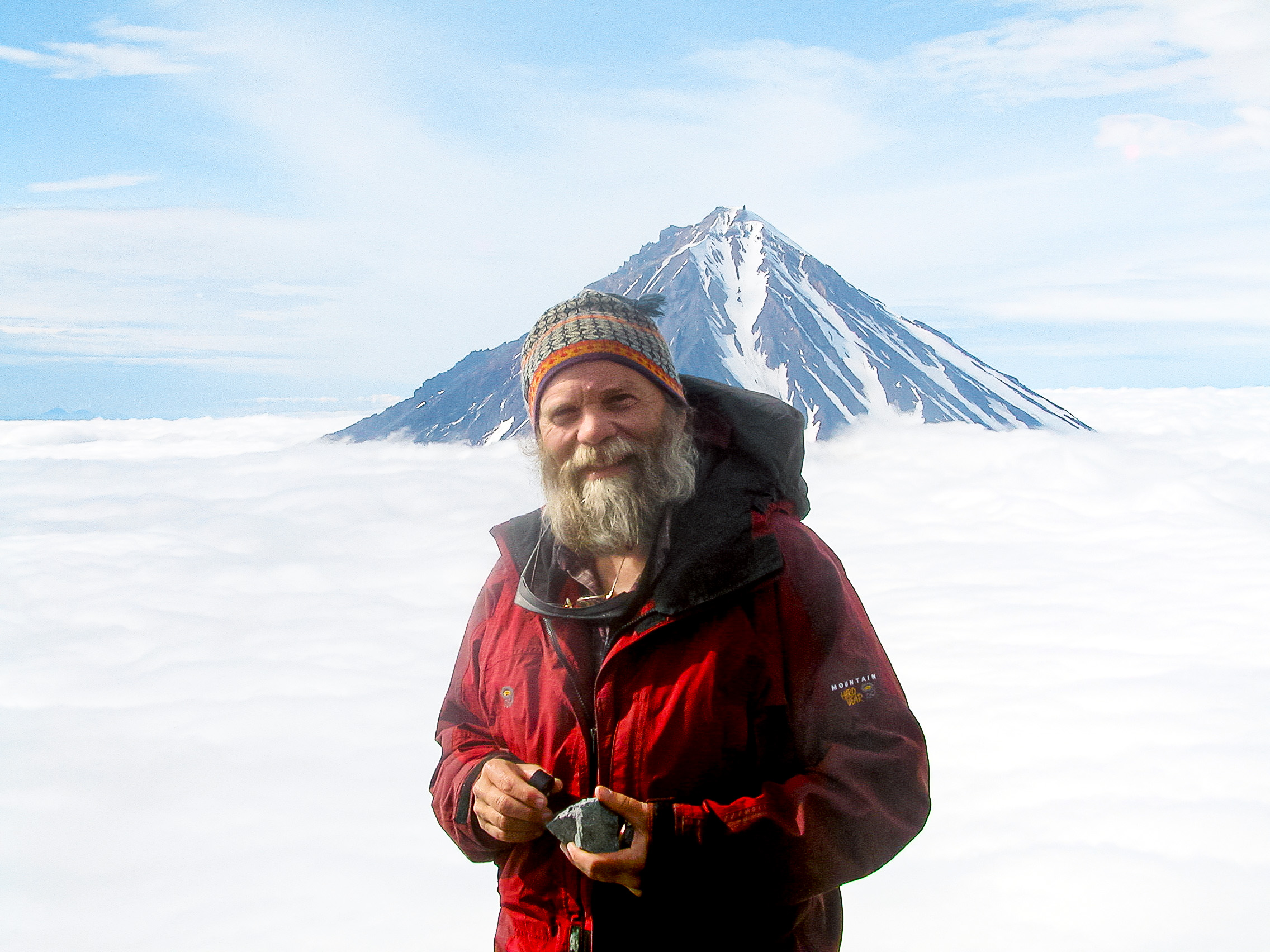Few places on Earth are as hot as the Krafla caldera in Iceland, an enormous volcanic crater where magma was discovered at surprisingly shallow depths. For John Eichelberger ’70, SM ’71, reaching that magma is the terrestrial equivalent of going to the moon.
A professor emeritus at the University of Alaska Fairbanks (UAF), Eichelberger is best known for his discoveries about how magmas release gas and how different magmas mix, as well as his leadership in drilling to study volcanoes and advocacy for international science and education partnerships. For his contributions to the understanding of natural hazards, the European Geosciences Union awarded him the 2015 Soloviev Medal.

He is now leading development of the Krafla Magma Testbed (KMT), expected to launch this year with an international coalition of scientists and engineers. The $100 million project involves drilling 2.1 kilometers into a chamber below the volcano that holds magma at temperatures around 900 °C, offering an unprecedented opportunity to study the source of volcanic eruptions and geothermal energy. KMT’s goals include improving eruption forecasting and extracting energy that would be an order of magnitude greater than what’s generated by conventional geothermal sources.
Eichelberger calls his time at MIT studying igneous petrology “the most influential intellectual experience of my life.” After earning a geology PhD from Stanford, he worked at Los Alamos and then Sandia National Laboratories, whose Magma Energy Project drilled into a Hawaiian lava lake. “Drilling molten rock to learn its secrets became an inspiration, or perhaps an obsession, that drove much of my later career,” he says.
In 1989, a 747 flew into a volcanic ash cloud over Alaska and nearly crashed, which led to new funding for monitoring volcanoes under air routes. Eichelberger moved north to become UAF’s lead volcanology professor, expanding the Alaska Volcano Observatory into a key post that tracks volcanic activity along the Aleutian Island chain and (with Russian colleagues) Russia’s Kamchatka Peninsula. He later led the US Geological Survey’s Volcano Hazards Program, before returning to UAF in 2012 to become dean of the graduate school. In 2020, he edited a special issue of Geosciences on magma-hydrothermal systems.
Eichelberger has lost colleagues to eruptions and had close calls himself. An MIT mentor, the late Thomas R. McGetchin, taught him to limit exposure to the work’s unique risks: “Go there, do what you need to do, and get out.”
Keep Reading
Most Popular
Large language models can do jaw-dropping things. But nobody knows exactly why.
And that's a problem. Figuring it out is one of the biggest scientific puzzles of our time and a crucial step towards controlling more powerful future models.
How scientists traced a mysterious covid case back to six toilets
When wastewater surveillance turns into a hunt for a single infected individual, the ethics get tricky.
The problem with plug-in hybrids? Their drivers.
Plug-in hybrids are often sold as a transition to EVs, but new data from Europe shows we’re still underestimating the emissions they produce.
Google DeepMind’s new generative model makes Super Mario–like games from scratch
Genie learns how to control games by watching hours and hours of video. It could help train next-gen robots too.
Stay connected
Get the latest updates from
MIT Technology Review
Discover special offers, top stories, upcoming events, and more.